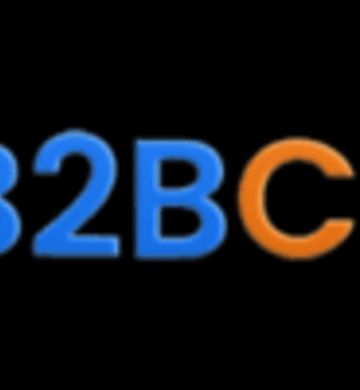Business Client need Web Development
Contact person: Business Client
Phone:Show
Email:Show
Location: Palm Bay, United States
Budget: Recommended by industry experts
Time to start: As soon as possible
Project description:
"Project Overview
Build a turnkey, toddler-safe RFID audio player that plays custom audio when a child taps an RFID/NFC card or keyfob. The device must be battery powered with USB‑C charging, expose a simple web UI for uploading and assigning audio, and be configured, tested, and documented for non-technical caregivers. Soldering and 3D printing are allowed; the freelancer may choose fully off‑the‑shelf modules or a custom PCB and printed enclosure where it improves reliability, safety, or ergonomics.
---
Core Requirements
- Power and charging
- Internal rechargeable battery with USB‑C charging and integrated charge-management circuitry.
- Target runtime: 6–12 hours typical use on a single charge; freelancer must state proposed capacity (mAh) and measured runtime.
- Safe charging: overcharge/overcurrent/short-circuit protection; support charging while operating.
- Charging indicator (LED or UI) and low-battery behavior (UI warning and/or graceful shutdown).
- RFID/NFC behavior
- Reliable tag read-to-play latency: <1 second target.
- Support MP3 and WAV playback.
- Map ≥10 RFID cards/keyfobs to individual clips or playlists.
- User interface and UX
- Web UI accessible from phone/tablet/laptop on local Wi‑Fi for uploading audio, mapping tags/playlists, volume control, and battery status.
- Offline operation after setup (no cloud required).
- Simple parental controls: disable/enable tags, global volume limit, optional PIN for settings.
- Safety and toddler readiness
- Enclosure or housing that prevents access to small parts and exposed connectors; secure battery mounting.
- Cable management and placement guidance to minimize tip/trip hazards.
- Rounded edges, stable base or wall-mount option, and child-safe materials where possible.
- Assembly constraints
- Soldering and 3D printing are permitted. If used, the freelancer must provide source files (Gerber for PCB, STL for printed parts) and a build guide so the system can be reproduced or serviced.
---
Hardware & Design Options (freelancer to propose one recommended option)
Provide one recommended approach plus two alternatives (trade-offs, costs, and safety implications).
- Option 1 — Balanced (recommended)
- Raspberry Pi Zero 2 W or Pi 4; USB‑C battery HAT or power management board; ACR122U-style USB NFC/RFID reader or wired PN532; small active speaker (3.5mm or USB); pack of tags; optionally a 3D‑printed enclosure.
- Target runtime: 8–10 hours.
- Option 2 — Custom compact (soldered, printed)
- Custom PCB with USB‑C charge controller, integrated RFID module (e.g., PN532), audio amp, and lipo battery connector; 3D‑printed toddler-safe enclosure with snap latches; recessed USB‑C port and sealed battery compartment.
- Target runtime: 6–10 hours depending on battery size.
- Option 3 — Off‑the‑shelf fast build
- Pi + off‑the‑shelf USB battery pack with USB‑C passthrough (no internal battery), USB RFID reader, and small speaker. Minimal soldering, no custom print. Lower integration polish, but fastest to deliver.
- Target runtime: 6+ hours depending on battery.
Include a clear recommendation that prioritizes safety, reliability, and caregiver friction.
---
Deliverables & Milestones
1. Procurement & design approval — hardware list with US vendor SKUs, proposed battery capacity, and chosen option for approval.
2. Hardware build — assembled unit (or units), including any soldered wiring, printed enclosures, and secured battery.
3. Software & image — SD card image or install script, web UI configured (Phoniebox or custom), and all config files.
4. Demonstration — recorded video or live demo showing charging, battery indicator, tag assignment, playback, and an end-to-end caregiver flow.
5. Documentation — non-technical step-by-step setup guide, quick-start cheat sheet, maintenance notes, battery care, wiring diagram, STL/PCB files (if used), and troubleshooting.
6. Handover & support — one 60-minute remote onboarding session and 30 days of post-delivery support for fixes and adjustments.
Payment tied to milestones: (A) procurement & start, (B) hardware assembly, (C) working demo & software delivery, (D) final handover and support start.
---
Acceptance Criteria & Testing
- Device charges via USB‑C and indicates charging state; boots and serves web UI while charging.
- Measured battery runtime meets proposed target within ±15% under defined usage profile (freelancer supplies test method).
- Scanning a programmed RFID card plays assigned clip within 1 second in ≥9/10 tests.
- Web UI allows upload, map-by-scan, playback test, volume adjustment, and displays battery/charging status.
- Unit auto-restarts on power reconnect and recovers from abrupt power loss without data corruption.
- Enclosure secures battery and electronics; no loose small parts accessible to a toddler.
- Delivered documentation enables a non-technical caregiver to add audio, remap tags, charge the unit, and perform basic troubleshooting.
---
Proposal Requirements, Timeline, and Budget
- Fixed-price proposal with itemized budget: hardware costs (separately listed), labor, and optional add-ons (extra tags, rugged speaker, extra battery).
- State proposed battery capacity (mAh), expected runtime, charging specs (input current/voltage), and safety features used.
- Timeline in calendar days from project start to final handover (preferred maximum: 2–3 weeks).
- State assumptions, risks, and trade-offs (power vs weight, Pi model choice, soldering level).
- Portfolio examples of similar Raspberry Pi, RFID, audio, PCB, or enclosure projects and two references or testimonials.
- Communication plan: primary contact method, working hours, and expected response time.
- Warranty/support: included support length (30 days minimum) and hourly rate for additional work.
- If proposing a custom PCB or printed enclosure, include deliverables: Gerber files, BOM, and STL files.
---
Final instructions and constraints
- Prioritize toddler safety, reliable tag reads, and caregiver simplicity.
- If using soldering or 3D printing, deliver design and source files and a clear serviceability plan (how to replace the battery or repair connections).
- Avoid non‑standard batteries or charger modules that are difficult to source in the US.
- Deliver a one-page quick-start for the caregiver that covers charging, giving/collecting tags, adding audio, and emergency shutdown." (client-provided description)
Matched companies (3)

Versasia Infosoft

B2Bcert ISO consultants in Bangalore
